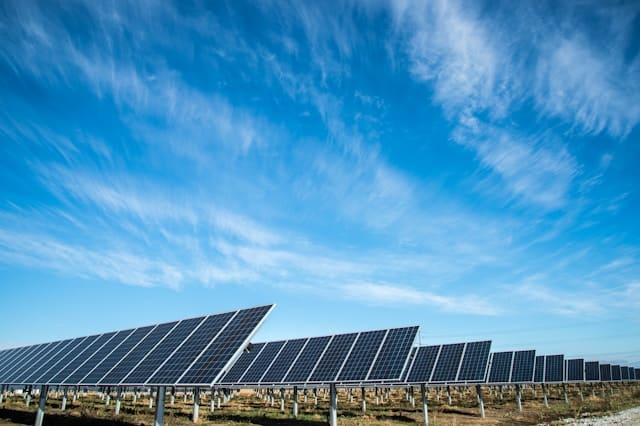What Strategies Optimize Solar Panel Efficiency in Varied Climates?

Solar energy is a clean and renewable source of power that harnesses the natural sunlight to generate electricity. However, the performance of solar panels, the key components of solar energy systems, can vary based on several factors. Among them, weather and climate hold a significant place. In this article, we will delve into the strategies that can optimize the efficiency of solar panels in varied climates.
Understanding Solar Panel Functionality
Before we proceed, it’s essential to comprehend how solar panels work. Solar panels are composed of photovoltaic cells, which convert sunlight into electricity. They absorb photons from the sunlight, which then generate an electrical current.
This might interest you : Qatar Food Festival : Impact and highlights of this culinary event
The output of a solar panel is directly proportional to the amount of sunlight it receives. Hence, the efficiency of solar panels hinges greatly on the weather, especially the amount of sunlight available. However, variables such as temperature, snow, rain, wind, and dust can also influence the panel’s efficiency. Therefore, it’s vital to develop strategies that can optimize the solar panel’s performance across varied climatic conditions.
Optimal Placement and Orientation
To maximize the capture of sunlight, the placement and orientation of solar panels are crucial. It’s recommended that panels are positioned towards the equator, as it allows them to receive the most sunlight throughout the day. In the northern hemisphere, panels are best positioned facing south, while in the southern hemisphere, a north-facing position is ideal.
Also to see : How Do Interactive Virtual Museums Enhance Historical Education?
The tilt angle also plays a crucial role in optimizing solar panel efficiency. For maximum sunlight capture, the panels should be angled at a degree equal to the latitude of the location. This strategy ensures that the panels are perpendicular to the sun’s rays at noon, leading to maximum sunlight absorption.
Utilizing High-efficiency Solar Cells
Not all solar cells are created equal. The efficiency of photovoltaic cells, which make up solar panels, can range from 10% to over 20%. High-efficiency cells, although more expensive, can generate more electricity from the same amount of sunlight compared to their less efficient counterparts.
Additionally, some types of solar cells, such as monocrystalline and polycrystalline cells, are more efficient at converting sunlight into electricity. These cells are made from a single crystal structure, which allows for a more direct pathway for electrons, reducing energy loss and improving efficiency. If you live in a climate with less sunlight, investing in high-efficiency solar cells can provide a significant boost to your solar power output.
Maintaining Solar panels for Optimum Performance
Regular maintenance is critical for keeping solar panels operating at their best. Dust and debris can accumulate on the panels, blocking sunlight and reducing their efficiency. Regular cleaning can solve this issue and ensure maximum sunlight absorption.
In colder climates, snow can pose a challenge. The accumulation of snow on the panels can completely block sunlight, reducing the system’s output to zero. Strategies to combat this issue include installing the panels at a steeper angle to allow the snow to slide off or using a solar panel snow rake to remove the snow.
Adapting to High Temperatures
While solar panels thrive on sunlight, high temperatures can affect their efficiency. As the temperature rises, the electricity output of solar panels decreases. This phenomenon, known as the temperature coefficient, can be a significant issue, especially in very hot climates.
However, certain strategies can help mitigate this problem. For instance, installing solar panels with a gap underneath can allow airflow, which cools the panels and increases efficiency. Additionally, some newer solar panel models come with inbuilt cooling systems, which can also help with this issue.
Solar energy harnesses the power of the sun to provide a sustainable and renewable source of electricity. The efficiency of solar panels, however, can vary with the climate and weather conditions. By implementing the strategies mentioned above, you can optimize the performance and output of your solar panel system, irrespective of the climate.
Harnessing Sun Trackers for Enhanced Efficiency
For a more dynamic approach towards maximizing solar energy gain, sun trackers can be implemented. Sun trackers are devices that orient solar panels towards the sun throughout the day, ensuring optimal sunlight capture. These mechanisms significantly boost solar power output as they allow the panels to absorb the maximum amount of sunlight at any given time.
There are two types of sun trackers; single-axis and dual-axis. Single-axis trackers follow the sun’s path from east to west during the day, while dual-axis trackers adjust according to the sun’s seasonal variations, changing both azimuth (east to west) and altitude (north to south).
In regions with a high amount of direct sunlight, such as desert climates, sun trackers can be particularly beneficial. However, in climates where the sky is often overcast, the efficiency of these trackers decreases as the diffuse sunlight becomes more prevalent than direct sunlight.
While incorporating sun trackers increases initial installation costs, the enhanced energy production over time usually offsets the initial investment. Nevertheless, it’s crucial to consider the local weather conditions before opting for this technology. This strategy is a clear example of how energy management can significantly impact overall energy output and efficiency.
Utilizing Advanced Inverter Technology
Inverters play a critical role in solar energy systems. They convert the direct current (DC) produced by solar panels into alternating current (AC) that can be used in homes or fed into the power grid. The efficiency of these inverters affects the overall efficiency of the solar energy system.
Newer models of inverters, known as maximum power point tracking (MPPT) inverters, optimize the energy output of solar panels. They do this by constantly adjusting the electrical load to maximize the power extraction under varying weather conditions.
The use of MPPT inverters can be particularly beneficial in fluctuating weather conditions. They can optimize power output during partial shading, cloudy conditions, and at dawn and dusk when sunlight is weakest. Utilizing advanced inverter technology can enhance solar panel performance, regardless of the climate.
Conclusion
To conclude, solar panels provide an excellent way to harness the power of the sun, transforming it into a renewable source of electricity. The energy efficiency of these panels, however, can be influenced by various factors, including the climate and weather conditions. By understanding and applying these strategies, it’s possible to optimize solar panel efficiency across diverse climates.
The key takeaway here is that optimizing solar energy systems is not a one-size-fits-all approach but requires careful planning and implementation of strategies that best suit local conditions. Whether it is the optimal placement and orientation of panels, the use of high-efficiency solar cells, regular maintenance, adaptation to high temperatures, use of sun trackers, or advanced inverter technology, each approach contributes to maximizing the energy output and panel performance.
In the face of global climate change, optimizing solar panel efficiency is not just beneficial—it is crucial. By making solar energy systems more efficient, we can contribute to the global effort to reduce carbon emissions and transition to sustainable energy sources. Here’s to a future powered by the sun!
